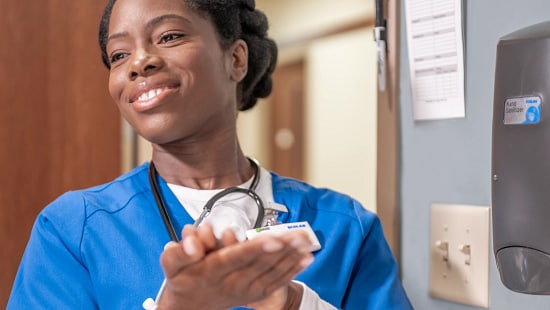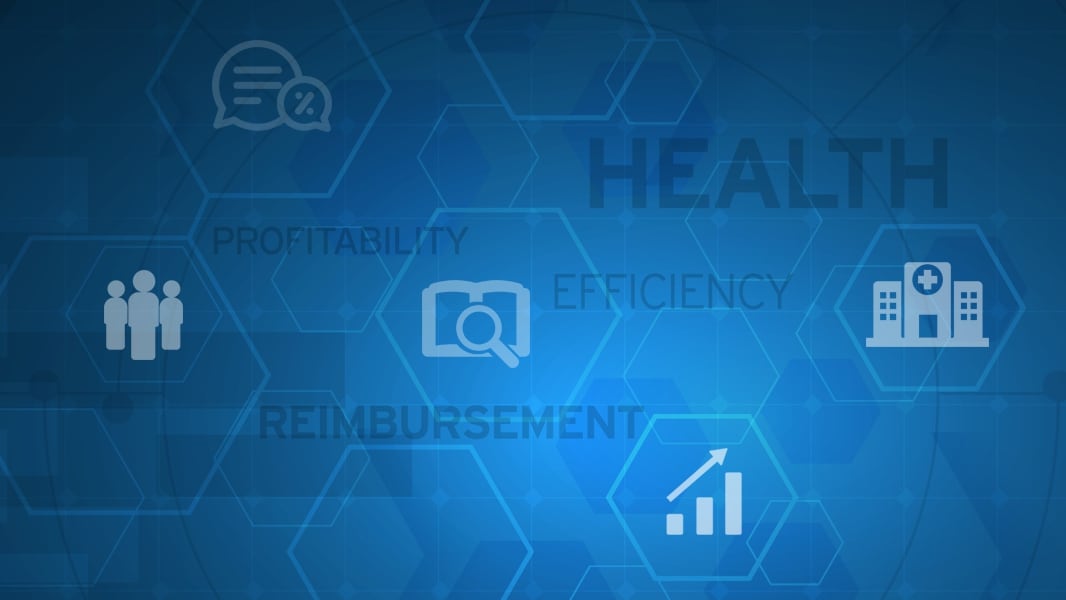A Guide to Hand Hygiene in Healthcare and Infection Prevention
Your complete guide to healthcare hand hygiene. We cover why this practice is so important, from basic handwashing techniques to advanced solutions for infection control.

Hand hygiene in healthcare is crucial in the fight against healthcare-associated infections, which are caused by pathogens such as bacteria, viruses, and fungi. These infections can arise during or shortly after receiving medical care, posing a significant threat to patient safety. The CDC reports that healthcare-associated infections (HAIs) affect 1 in 31 hospital patients daily1. However, this alarming statistic drives home the urgent need for consistent and rigorous hand hygiene practices.
In healthcare settings, germs can be transmitted through the hands of healthcare workers (HCWs) or anyone involved in patient care. This underscores the critical importance of hand hygiene in healthcare. Maintaining stringent hand hygiene is not just a best practice – it is essential for protecting patients and staff alike. The European Centre for Disease Prevention and Control (ECDC) echoes this urgency, estimating that around 4.3 million patients acquire2 at least one HAI during their hospital stay in Europe – a figure that can be significantly lowered by adhering to proper hand hygiene.
Despite its critical importance, hand hygiene compliance among HCWs remains alarmingly low, often falling below 50%3, according to the World Health Organization (WHO). This highlights the pressing need for continuous and concerted efforts to enhance hand hygiene practices in healthcare settings.
Defining Hand Hygiene: Core Practices in a Healthcare
Hand hygiene refers to the practices and methods used to clean hands. These practices can be easily carried out in the following ways:
- Handwashing: Cleaning hands with soap (regular or antimicrobial) and water to remove dirt and pathogens.
- Hand sanitizer: Applying or rubbing alcohol-based hand sanitizers (containing at least 60% alcohol) on the hands to reduce the number of germs and minimize the growth and transmission of microorganisms.
Why Is Hand Hygiene So Important in a Healthcare
Healthcare facilities care for vulnerable patients, many with weakened immune systems, making them more susceptible to healthcare-associated infections. This risk is compounded by the presence of multidrug-resistant organisms (MDROs), which are difficult to treat and can lead to severe complications. Therefore, strict adherence to the highest standards of hand hygiene in healthcare is critical to breaking the chain of infection and protecting both patients and healthcare workers from preventable harm.
The 3 major benefits of hand hygiene in healthcare facilities are:
- Infection Prevention: Since most germs spread through touch during patient care, clean hands dramatically reduce the transmission of pathogens to surfaces, equipment, and other patients. This simple act cuts down the risk of healthcare-associated infections for both staff and patients.
- Organizational Reputation: Ensuring hand hygiene compliance reflects a strong commitment to patient safety and well-being. This dedication not only builds trust with patients but also fosters loyalty and a positive culture among healthcare workers.
- Cost Effectiveness: Effective hand hygiene reduces the risk of HAIs. This can significantly cut down treatment expenses, easing financial pressures on both patients and organizations.
Achieving these benefits requires a systematic approach. Explore how the Ecolab® Hand Hygiene Program provides comprehensive solutions to enhance patient safety and improve compliance.
The 5 Moments: When to Practice Hand Hygiene in Healthcare
The WHO has identified five critical moments when hand hygiene must be performed to break the chain of infection:
- Before touching a patient
- Before clean/aseptic procedures
- After body fluid exposure/risk
- After touching a patient
- After touching the patient's surroundings
Overcoming Common Barriers to Hand Hygiene Compliance
In fast-paced, high-pressure clinical environments, even small lapses in hand hygiene pose a direct threat to patient safety. Traditional manual audits have limitations. Fortunately, newer technologies provide smarter monitoring solutions, helping identify gaps and improve adherence with greater accuracy.
Modern Solutions to Enhancing Hand Hygiene and Patient Safety
Recent technological innovations, like electronic hand hygiene compliance monitoring systems, are transforming how healthcare facilities monitor and improve hand hygiene practices. These systems precisely record hand hygiene events and provide real-time data that drives better compliance.
The Ecolab® Hand Hygiene Program offers a comprehensive solution designed to elevate your facility's hand hygiene standards, driving measurable clinical, operational, and financial improvements. Our system monitors hand hygiene events by individual healthcare workers, promoting accountability and actionable insights. This approach helps achieve better results, improved patient outcomes, a safer workplace, and protected hospital margins.



